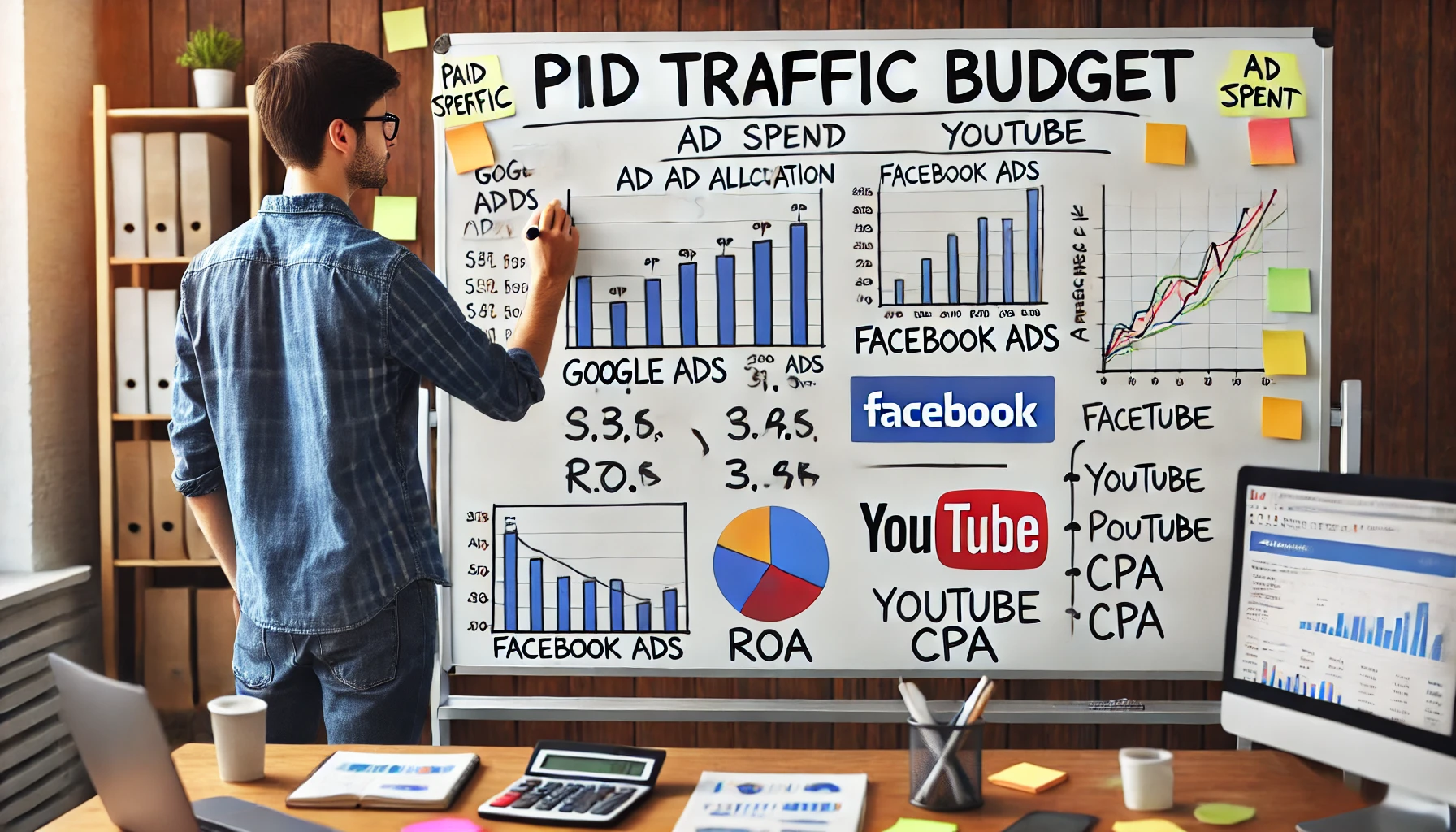📌 Introduction
Investing in paid traffic is essential for businesses looking to grow their online presence, generate leads, and drive sales. But one of the biggest challenges for advertisers is determining how much budget to allocate for digital ads. Invest too little, and you might not get enough data to optimize your campaigns. Invest too much without proper strategy, and you risk burning money on ineffective ads.
This guide will help you understand how to set an effective budget for paid traffic, calculate costs based on your goals, and allocate spending efficiently across platforms like Google Ads, Facebook Ads, and LinkedIn Ads.
🎯 Factors That Influence Your Paid Traffic Budget
✔ Industry & Competition – Highly competitive industries have higher ad costs.
✔ Target Audience – A broader audience may require a higher budget.
✔ Ad Platform – CPC (Cost Per Click) varies between Google, Facebook, and LinkedIn.
✔ Campaign Objectives – Lead generation, sales, and brand awareness have different cost structures.
🔎 1. Define Your Advertising Goals
Before setting a budget, you need to clarify what you want to achieve.
✅ Common Paid Traffic Goals:
✔ Brand Awareness – Get as many impressions as possible.
✔ Lead Generation – Capture emails, form submissions, or calls.
✔ E-commerce Sales – Drive product purchases.
🛠 Recommended Tools:
- Google Analytics Goals – Tracks conversions for different objectives.
- Facebook Ads Manager Reports – Measures success for lead and sales campaigns.
📊 2. Calculate Your Ideal Budget
The amount you spend on paid traffic should align with your expected return on investment (ROI).
✅ Basic Budget Formula:
Ad Budget = (Target Revenue ÷ Expected ROAS) x Average CPA
Example: If you want to generate $10,000 in sales and expect a ROAS (Return on Ad Spend) of 5x, you should allocate $2,000 for ads ($10,000 ÷ 5 = $2,000).
🛠 Recommended Tools:
- Google Ads Budget Planner – Estimates cost based on industry benchmarks.
- Facebook ROAS Calculator – Helps predict return on ad spend.
📢 3. Allocating Budget Across Platforms
Your budget distribution should match your business goals and audience behavior.
✅ Suggested Budget Allocation:
✔ Google Search Ads (30-40%) – Best for high-intent leads.
✔ Facebook & Instagram Ads (30-40%) – Ideal for engagement and remarketing.
✔ YouTube or Display Ads (10-20%) – Great for brand awareness.
🛠 Recommended Tools:
- Google Smart Bidding – Automates budget allocation based on conversion data.
- Facebook Campaign Budget Optimization (CBO) – Distributes ad spend dynamically.
📉 4. Testing & Scaling Your Budget
Starting with a small test budget helps gather data before scaling investment.
✅ Budget Scaling Strategy:
✔ Start with $10-$50/day per campaign.
✔ Analyze CPC, CTR, and conversion rates after one week.
✔ Scale winning campaigns by increasing the budget 10-20% weekly.
🛠 Recommended Tools:
- Google Ads Experiments – Tests different bidding strategies.
- Revealbot – Automates scaling for Facebook Ads.
🚀 Conclusion
Setting a paid traffic budget is not about spending the most—it’s about spending smart. By defining clear goals, calculating expected returns, and allocating budget strategically, you can maximize ad performance while minimizing wasted spend.
🔥 Key Takeaways
✔ Define clear advertising goals before setting a budget.
✔ Use ROAS calculations to estimate spending.
✔ Distribute budget across Google, Facebook, and YouTube Ads based on objectives.
✔ Start with a small test budget and scale campaigns gradually.
By applying these strategies, you’ll optimize your budget for better ROI and long-term growth! 🎯
